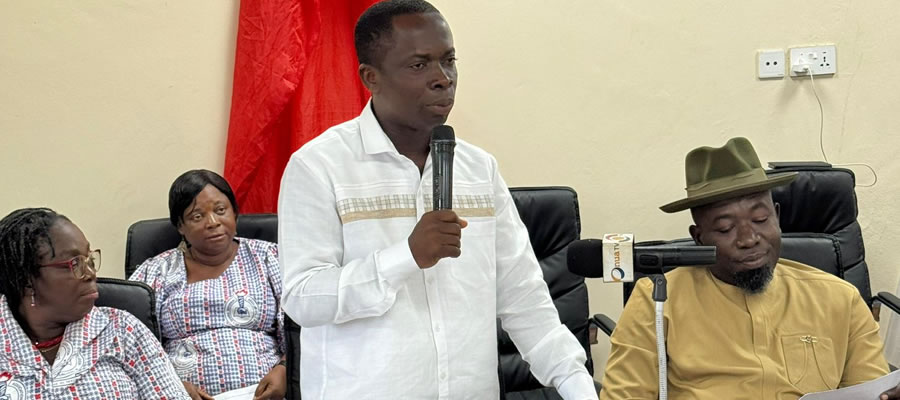

Vulnerability Analysis
There has been an international consensus on the recognition of the rights of persons with disabilities over the past few decades, with emphasis on the promotion of their dignity for inclusive development. Generally, vulnerable groups in the district include women and children, persons with disability, orphans, children orphaned by HIV/AIDS, trafficked children, child labourers and the aged as result of cultural, social and economic factors.Child neglect and child labour practices are also common phenomenon in the district. It is estimated that over 40.0% of children in the district are of single parent. This is a result of itinerant drivers and farmers rejecting responsibility for pregnancies. Furthermore, the disability and aged proportions of the population stand at 3.8% and 3.9% respectively.
Since these groups of the population have either passed their productive ages or have no productive capacity as they have very little or no skill training it worsens the dependency ratio of the district.The most common type of disability in the district is emotional disability with 45% which is higher than the regional average of 15.3%. This is followed by persons with sight problems recording 24.6%, 18.7% for those who have physical deformities and 10.9% for hearing impairment. Persons who are mentally retarded (intellectual disability) constitute 8.6% and persons with speech problems recording 9.8% whilst persons considered as having difficulty in carrying out normal duties is 4.2%.In all cases with the exception of hearing disability, there are higher proportions of males than females.
For instance males with emotional, sight and physical challenges constitute 46.9% 42.3% and 18.8.9 % respectively.PWDs are distributed across the district.They are more in the rural (4.5%) than in urban (2.0%) localities in the district.The data shows that visual or sight impairment is most common type of disability in urban (37.5%) and rural (22.4%). However, there is higher disparity in percentage of those who have emotional disability in the rural localities (50.2%) than the urban localities (4.0%). Males in the urban localities have physical disability of 38.7 percent compared to females (31.5%). There are more males (0.4%) who are intellectually disabled compared to females (0.3%).The district has a registered population of 897 PWDs made up of 398 males (44.4% and 499 females (55.6%) living with a varying types of disabilities.
Children under 18 years constitute 15.7% of the PWDs with 49.3% in the economically employable age group of 18 – 59 years. Culturally, the general disrespect for womanhood in the district is borne out of the attitude of society especially of men. This has because society still believes that a woman without a child at 18 years old would remain barren hence, the early exposure to sex resulting in teenage pregnancies, early marriages and school drop out with its attendant problems. This affects school enrolment and ultimately literacy levels among females. Again, the general perception of women playing second fiddle to men, and, are only good for the kitchen has consequently led to many girls of school going age being denied the basic right to education.The multidimensional nature of poverty and vulnerability require that a holistic approach involving all sectors is adopted in designing and implementing poverty reduction and vulnerability programmes.
Date Created : 11/23/2017 2:10:53 AM









 facebook
facebook
 twitter
twitter
 Youtube
Youtube
 +233 593 831 280
+233 593 831 280 0800 430 430
0800 430 430 GPS: GE-231-4383
GPS: GE-231-4383 info@ghanadistricts.com
info@ghanadistricts.com Box GP1044, Accra, Ghana
Box GP1044, Accra, Ghana